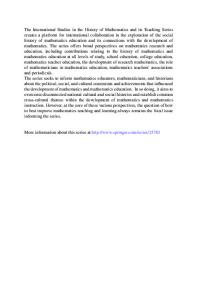Mathematical Descriptions
In this chapter we present systematically the mathematical description of bilinear dynamical systems. More precisely we consider both the descriptions through input-state-output equations, which form the basis of the structure theory, and the descriptions
- PDF / 3,799,149 Bytes
- 67 Pages / 481.89 x 691.654 pts Page_size
- 9 Downloads / 505 Views
LEe T U RES
-
No.
153
ANTONIO RUBERTI Al.BERTO ISIDORI PAOLO D'ALESSANDRO UNIVERSITY OF
ROME
THEORY OF BILINEAR DYNAMICAL SYSTEMS
COURSE HELD AT THE DEPARTMENT FOR AUTOMATION AND INFORMATION JULY 1972
lJDINE 1972
SPRINGER-VERLAG WIEN GMBH
This work is subject to copyright.
All rights are reserved, whether the whole or part of the material is concerned specifically those of translation. reprinting, re-use of illustrations, broadcasting, reproduction by photocopying machine or similar means, and storage in data banks.
©
1972 by Springer -Verlag Wien
Original ly publishe d by Springe r - Verlag Wien - New York in 1972
ISBN 978-3-211-81206-8 DOI 10.1007/978-3-7091-2979-1
ISBN 978-3-7091-2979-1 (eBook)
Note to the Reader.
The following system of numbering and cross-1'eferencing is used in these notes. Each item (definition, theorem, remark etc.) is given a pair of numbers in the left lumd margin, the first one indicating the section, the second one is used to number consecutively within each section. When we refer in a section to an item within the same chapter both item numbers are given. For cross references a third number is added on the left to indicate the chapter. Moreover preceding the text a list of symbols is git/en.
List of symbols and abbreviations.
.. ...
implies and is implied by
v
for all
r. It. s
right hand side
l.h.s
left hand side
~
is defmed to be
implies is implied by
is equivalent to
0
exists such that Vte[O,T]
(2.14)
and from this we conclude
MiK. (MT)i Hz.(t) n~-r~ K 1 ., ., 1.
1.
(i = 0, 1, 2, ... )
(2.15)
12
Bilinear differential equations
Inequality (2.15) shows that the sequence {Izj(t) I}, for each tE[O,T], has, as an upper bound, the sequence {(MT)iK/i! } which converges to zero for i ~
00.
Thus
{zJ)} converges uniformly to zero on [O,T], and {x j(.) }converges uniformly to x(.) on the same interval.
1)
(4.8)
This completes the proof. l). instead of (4.4) and (4.6). it will be necessary to consider p equations for fmding F(i)(t) and. respectively. p equations for finding H(i)(t). i
= 1•...• p.ln these equations there should
appear suitable partitions of the matrix corresponding to Sm,m + I' Before concluding this section. we observe that &om this procedure emerges directly the possibility of proving the following (4.9) Theorem - A factorizable sequence of kernels {WI (t l specified by the sequence Wi(t l
•...•
ti)~mo +
I.
•••.•
tin; is uniquely
where mo is the dimension of its
minimal factorization. (4.10) Remark - The importance of this result from the point of view of the modelling of bilinear systems should be clear. We note that this is valid under quite general hypotheses: the only assumption is that the sequence {Wi(t l
•... ,
t i )}; is factoriza-
ble. One may therefore conjecture the existence of a stronger result valid for bilinear systems, since in this case F(t). G(t), H(t) have a proper rational Laplace transform. In effect it is possible to prove that a sequence of kernels realizable by means of a fmite dimensiona
Data Loading...











